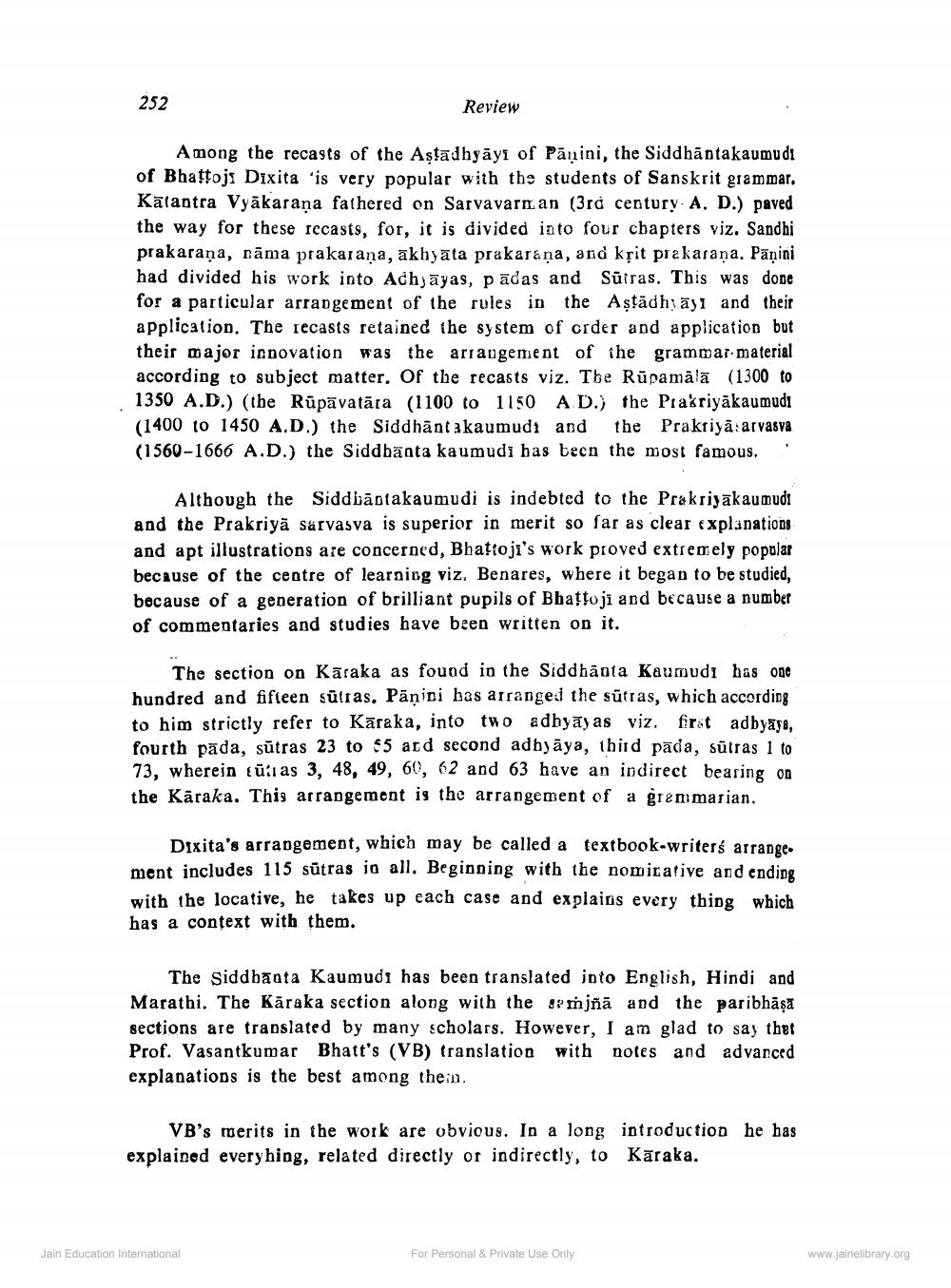________________
252
Review
Among the recasts of the Astadhyāyi of Panini, the Siddhāptakaumudi of Bhattoji Dixita 'is very popular with the students of Sanskrit grammar. Kālantra Vyakarana fathered on Sarvavarn an (3rd century A. D.) paved the way for these recasts, for, it is divided into four chapters viz. Sandhi prakaraṇa, rāma prakarana, ākhyāta prakarana, and kțit prakarana. Pāṇini had divided his work into Adhyāyas, pādas and Sūiras. This was done for a particular arrangement of the rules in the Aştādhāyi and their application. The recasts retained the system of order and application but their major innovation was the arrangement of the grammar-material according to subject matter. Of the recasts viz. The Rūpamālā (1300 to 1350 A.D.) (the Rūpāvatāra (1100 to 1150 AD.) the Prasriyākaumudi (1400 to 1450 A.D.) the Siddhāntakaumudi and the Prakriyā arvasva (1560-1666 A.D.) the Siddbanta kaumudi bas teen the most famous. .
Although the Siddhāptakaumudi is indebted to the Prakriyākaumudi and the Prakriyā sarvasva is superior in merit so far as clear explanations and apt illustrations are concerned, Bhatroji's work proved extremely popular because of the centre of learning viz, Benares, where it began to be studied, because of a generation of brilliant pupils of Bhattoji and because a number of commentaries and studies have been written on it.
The section on Kāraka as found in the Siddhāota Kaumudi has one hundred and fifteen sūtras. Pāṇipi bas arranged the sūtras, which according to him strictly refer to Kāraka, into two adhyāyas viz. frat adbyaya, fourth pāda, sūtras 23 to 65 and second adhyāya, third pāda, sūtras 1 to 73, wherein tūiias 3, 48, 49, 60, 62 and 63 have an indirect bearing on the Kāraka. This arrangement is the arrangement of a grammarian.
Dixita's arrangement, which may be called a textbook-writers arrangement includes 115 sūtras jo all. Beginning with the nominative and ending with the locative, he takes up each case and explains every thing which has a context with them.
The siddbaata Kaumudi has been translated into English, Hindi and Marathi. The Kāraka section along with the smjñā and the paribhāşa sections are translated by many scholars. However, I am glad to say thet Prof. Vasantkumar Bhatt's (VB) translation with notes and advanced explanations is the best among the in
VB's merits in the work are obvious. In a long introduction he has explained everyhing, related directly or indirectly, to Kāraka.
Jain Education International
For Personal & Private Use Only
www.jainelibrary.org




